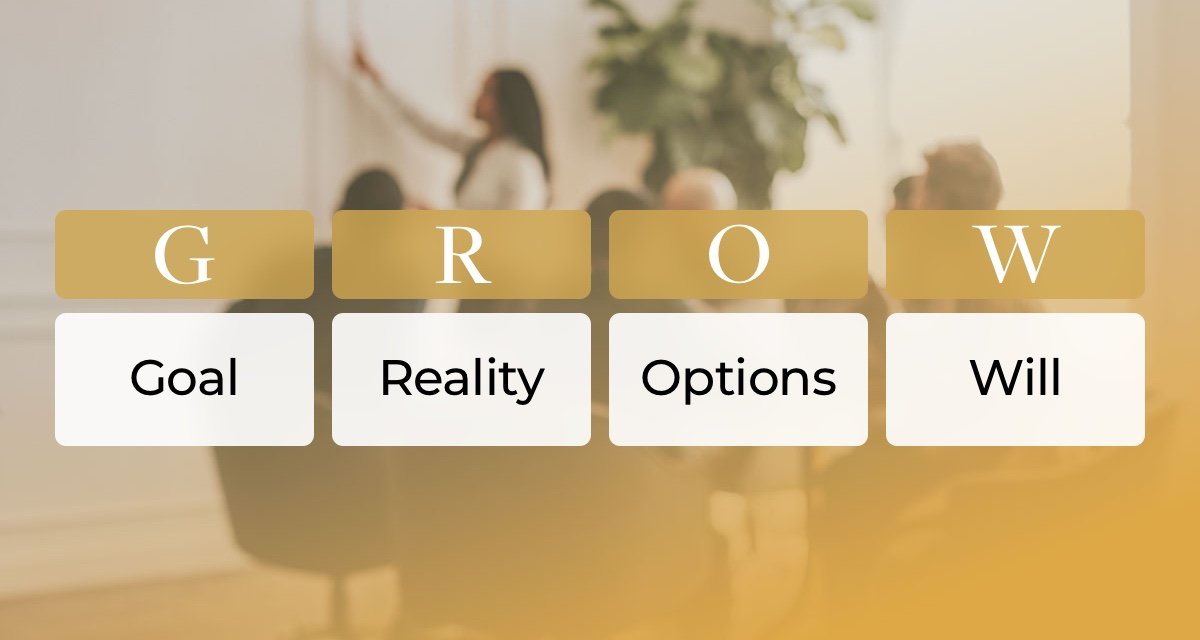Use the GROW model to coach yourself and others
Sir John Whitmore's GROW Model is a practical coaching framework widely used in everyday leadership conversations.
Sir John Whitmore's GROW Model is a practical coaching framework widely used in everyday leadership conversations to set goals and improve performance. With just four simple steps, this model has decades of proven results and therefore has become the backbone of coaching in many organisations along with the military.
The model was developed by Sir John Whitmore and colleagues in the late 1980s, popularised by Witmore's book Coaching for Performance - A Leader Guide Recommended Read.
GROW is an acronym for:
Goal.
Reality.
Options (or Obstacles).
Will (or Way Forward).
Sir John Whitmore
You can work your way through the GROW Model in the same way that you'd plan a journey. First, you decide where you would like to go (Goal), and establish where you currently at (Reality).
Then you begin to explore various routes (Options) to get to your destination, and foresee any current or potential obstacles on route. Before you embark, you must ensure that you're committed to making the journey (Will), and are prepared for the obstacles that you could meet on the way.
GROW Questions
The GROW model is surprisingly simple, yet highly effective. All you need is a set of questions to use this model in coaching conversations with others or yourself.
G - Goal
The first step in GROW is to clarify the goals and aspirations.
Questions to use:
What are you trying to achieve?
What would you like to work on?
What do we want to get out of this meeting?
What do you want to walk away from this conversation with?
What do you see / hear / feel?
What would it be like if you achieved this goal?
R - Reality
The second step is to get clear on the current situation, internal and external obstacles.
Questions to use:
What's happening right now?
What qualities / resources do you have to help you?
What is moving you towards your goal?
What have you done so far?
What are the obstacles are in your way?
O - Options / Obstacles
The third step is to list out all the possibilities, strengths and resources. This will help you find ways forward.
Questions to use:
What are your options?
What else can you think of? (uncover ALL the options)
If I wasn't here, how would you handle it?
What could you do if money was unlimited?
What could you do if you knew you could not fail?
Tip: List as many options as possible and rank them on your level of commitment 1-10 (see next step).
W - Will / Way Forward
The fourth step is to determine the actions and accountability. This affirms the Will / Way forward you are committing to in order to achieve your goal.
Questions to use:
What will you do, by when?
How will I/others know when you've been successful?
Out of all the options, what ones are you most committed to?
Can you think of anything that will stop you from taking your first step?
How will you overcome this obstacle?
As you work through the GROW steps in a conversation, you might find yourself jumping around the steps in a different order—and that's okay. For example: as you progress through the steps, it may become clear that your goal(s) needs to change because it’s unrealistic or you don’t have the will to commit to achieving the goal itself. That’s the genius of the GROW model — it helps you assess whether a goal is worth achieving before you fully commit to it.
TIP: When coaching others, avoid using 'WHY' questions that can be perceived as threatening to an individual and create a defensive response. Who, What, When, and Where are questions that drive curious questioning and enable self-improvement.
The simplicity and flexibility of the GROW model is what makes it so effective in coaching conversations. You can use GROW in the workplace in team meetings, problem solving, planning sessions, performance reviews - the list goes on. GROW is not limited to coaches or leaders, it's a model that all team members should be trained in to coach themselves to solve problems and unlock greater performance.
“The strongest case for following the GROW sequence with powerful coaching questions is that it is simple, flexible, and it works.” — Sir John Whitmore
Take action
If you're a Leader Guide Coaching client, speak to your Coach about using the GROW model in your business. Refer to the GROW Sheet resource in LeaderHub.
Further Reading: Coaching for Performance
Special thanks to Lumian Consulting Brisbane for introducing and training us on this framework. Coaches need Coaches!



